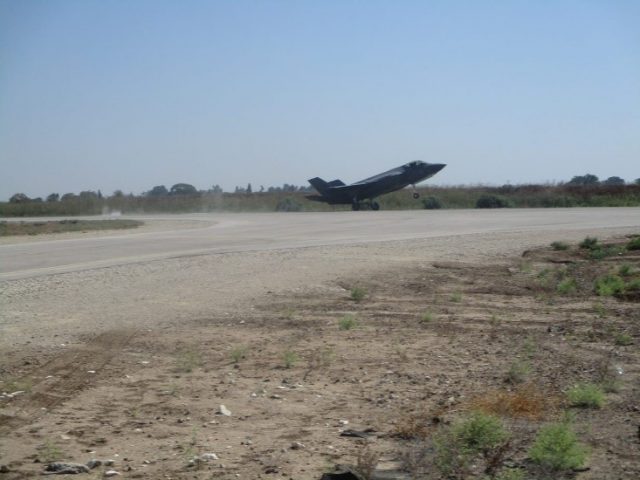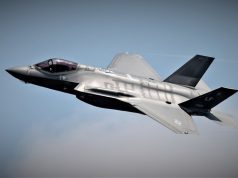
US Army and Air Force civil engineers recently partnered with Israeli Air Force engineers to test new airfield damage repair technologies in Israel.
The Air Force Civil Engineer Center, US Army Engineer Research and Development Center and US Air Forces in Europe-Air Forces Africa engineers trained their Israeli counterparts on the installation and maintenance of Fiber Reinforced Polymer, or FRP, mats and anchoring systems.
The training was followed by Israeli Air Force F-15 and F-35 pilots conducting live-flight testing.
The US-Israeli testing session was unique because it was the first time FRP kits were used in the large crater configuration during live-flight operations, as well as the first time F-35s were used to test the kits.
The team performed 30 successful aircraft operations, ranging from taxi maneuvers to acceleration and deceleration testing with maximum braking on the repairs to show the mat’s survivability requirement under real-world aircraft loads.
The matting system and anchoring technologies are used as part of the Air Force’s Rapid Airfield Damage Recovery, or RADR, concept to quickly recover airfields following wartime damage.

“This cooperative test program has been in coordination for several years and began during an international airfield conference held in Panama City, Florida, where the United States hosted countries from around the world to discuss airfield damage repair,” said Craig Mellerski, AFCEC Requirements, Research and Development and Acquisitions Division chief.
“To expand our experience in utilizing FRP for airfield damage repair, we needed to put a current aircraft on it, and we wanted to use it in the large crater configuration, which was a critical aspect of the test,” said Karsten Lipiec, AFCEC Pavements Research program manager. “Previous experiments included live-aircraft testing on alternative configurations. This test successfully demonstrated the use of the FRP repair technology for a larger type of repair.”
The speed of FRP kit installation is key. For example, an experienced team can interlock the panels, install the anchors and prepare the surface for aircraft traffic in less than two hours, allowing aircraft to take off and resume flight operations,” said Staff Sgt. Jared Swan, a Silver Flag instructor with the 435th Construction and Training Squadron at Ramstein Air Base, Germany, and a member of the team who conducted the Israeli training.
“I would say that FRP is the future of ‘expedient’ runway repair and agile combat support,” Swan said. “The use of FRP could potentially save an incredible amount of time when you take into consideration the manpower, equipment and material it takes to repair a runway.”
The US Army ERDC designed the FRP kits and seeing the successful tests was a highlight for Web Floyd, an ERDC subject matter expert who has been working on the technology since 2014.
“Seeing the F-35 operate on the mat for the first time was a career-defining moment, and working with a partner nation to improve one of our technologies by combining the technical expertise of both nations was very fulfilling and productive for everyone,” Floyd said.


























